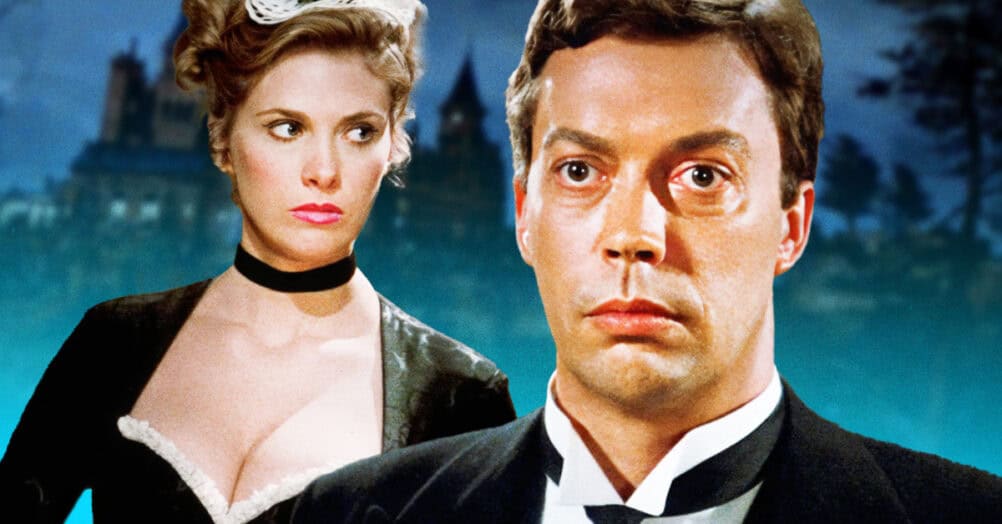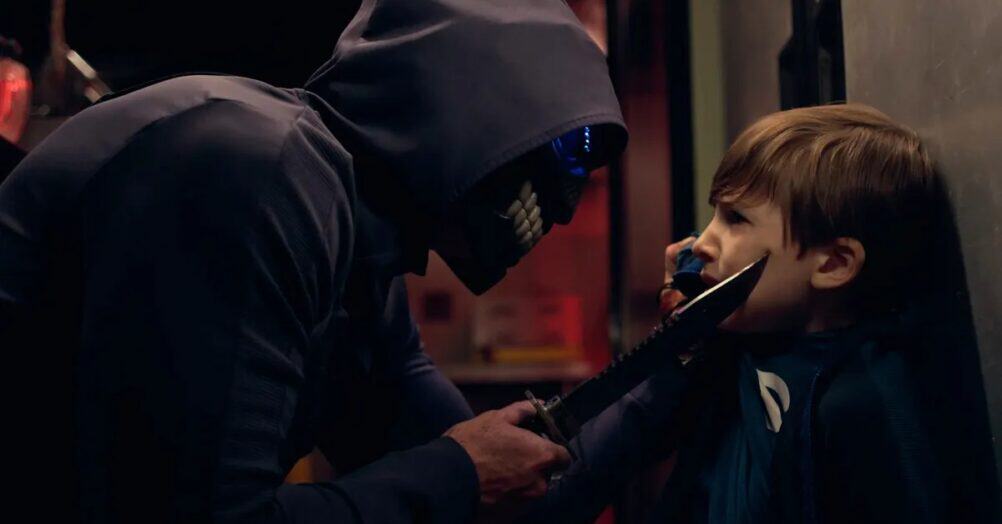Last Updated on August 2, 2021

Ink & Pixel is a source of pride and joy for me as a writer and as such, I’m always striving to take this column further for those who read and enjoy it. If you yourself, or anyone you know, helped to make any of the amazing feature animated films found within this column, I would love to talk to you to further my knowledge. Please contact me at [email protected] so we can discuss it further.
Once upon a time, in a time that people have all but forgotten, there existed a form of entertainment known throughout the land as stage magic. People would sometimes travel from far and wide, hoping to see a man pull a rabbit out of hat, or perhaps saw his lovely assistant in half before their very eyes. Theater patrons would stare on in awe at the impossible illusions and wonder to themselves, “How does he do it?”

Magicians, whether you believe it or not, were once looked upon as being rock stars in their own right.

Somewhere along the way, however, people’s belief in magic began to wane. Those secrets – once kept behind the tightest of lips – began to slip out to the public. This dwindling of faith, coupled with the increasing advancements in technology, together made it very difficult for the magic makers to hold the attention of their audiences. Nowadays, magic comes in the form of mascara-clad “illusionists” like Criss Angel, or the perpetually brooding David Blaine. I’m sorry, but finding the keys to a 2005 Viper
or staying awake for 3 days
isn’t magic. Forget them, let’s explore a film that truly is magical, shall we?

The ILLUSIONIST is a British-French animated film that was released in the year 2010. Directed by Sylvain Chomet, THE ILLUSIONIST, or, as the French would say, L’lluionniste, was based on an unproduced script written in 1956 by French mime, director and actor Jacques Tali. THE ILLUSIONIST follows the story of a struggling stage magician, known to us throughout the film only by his stage name “Tatischeff.” Finding the crowds and club owners increasingly difficult to please as time goes on, Tatischeff accepts an offer from a drunken patron to try his act on the remote Scottish island, Iona (located in Inner Hebrides). Once there, Tatischeff accepts the most meager of living conditions, in order to cut down on living expenses, while at the same time attempting to reclaim his relevance in the entertainment industry.

Despite his humbling new existence, though, all is not lost! Living on the island, Tatischeff encounters the lovely company of a young girl named Alice. Alice, unlike the rest of the world, believes that Tatischeff’s magic is real. Tatischeff, seeing that there is at least one person left who still believes that he is magical, doesn’t have the heart to tell Alice the truth about his abilities. Instead, he pushes himself further into financial dept by continuously playing into the lie. The two friends eventually move to Edinburgh together, in the hopes of rekindling Tatischeff’s failing career. It’s there, while walking in town, that Alice gains the affections of a young man. Because of their equaled lusts for life and adventure, Alice and the young man soon become a couple. Tatischeff, touched by this turn of events, recognizes what Alice has found while in Edinburgh as the greatest magic of all, and leaves Alice to live her life; though not before telling her about the truth behind his particular brand of chicanery.

One of the most beautiful aspects of Sylvain Chomet‘s THE ILLUSIONIST is that it is presented almost entirely without dialogue. Sure you’ll hear a few indistinguishable words every now again, but essentially the story of the film is told entirely through the use of music, sound effects, and bodily gestures made by the film’s peculiar cast of characters. To add to this unique presentation of the film, the art for THE ILLUSIONIST was showcased by way of hand-drawn animation – much like Chomet’s 2003 theatrical release THE TRIPLET’S OF BELLEVILLE.

Taking cues from his most cherished era of animation (the Disney animated films of the 1960’s), Chomet saw very little use for CGI technology within this particular film. He was once quoted as saying “CGI is good for robots and toys, less for humans. I want to see the work of an artist on the screen not a machine whose visuals are too neat, shiny and clean.” To be sure that his team of animators were up to the task, Chomet demanded that every artist working on the film take life-drawing classes. Chomet wanted all of his characters to appear anatomically correct, especially in regard to the gestures made by the film’s title character, Tatischeff. Would you have liked to watch an animated film about a magician whose sleight-of-hand techniques
look contorted and awkward? I didn’t thinks so. There’s not very much magic to be found in that, is there?

The film was made at Chomet’s Edinburgh film studio, Django Films. The studio was named after the jazz guitarist Django Reinhardt, and is the only film that the studio will ever produce. This is because, shortly after THE ILLUSIONIST’S release, it was announced that the studio would be dismantled. The film, unfortunately, ran into trouble when it was reported by Chomet that it would take an additional $7 million beyond the film’s $10 million dollar budget to complete. The number of employees and animators working on the film was also a cause for concern as the size of the staff seemed to vary from person to person, depending on who you asked. Some reported that the film staffed 180 creatives, while Chomet claimed that it took a total of 300 to make the film happen. Nothing was ever confirmed by the parties involved and the query was eventually dismissed due to another matter concerning the film.

In 2010, controversy arose when Tati’s remaining family members took issue with the film. It was cited that “Tati was inspired to write the story in an attempt to reconcile with his eldest daughter, Helga Marie-Jeanne Schiel, whom he had abandoned when she was a baby. And although she’s still alive today and may in fact be his only direct living relative, she is nowhere mentioned in the dedications, which has seriously annoyed some” In point of fact, the screenplay for the THE ILLUSIONIST was handed over by Tati’s daughter, Sophie Tatischeff, two years prior to her own death. Helga Marie-Jeanne Schiel, Tati’s eldest daughter, feeling slighted by what she saw as an oversight on Chomet’s part, asked that she be given her proper credit as the film’s source of inspiration. The whole thing was perpetuated by an ongoing feud within the family about Tati’s questionable sense of responsibility toward his own flesh and blood.

THE ILLUSIONIST opened in only 84 cinemas within the country of France and another 42 theaters inside of the United Kingdom, before making its way over to a very select few amount of theaters in the United States. All tolled the film only managed to pull a total of $5.6 million dollars from out of its hat. This, unsurprisingly, branded the film as not having much up its sleeve beside a ratty, old deck of cards and perhaps a bouquet of fake flowers.

The film was also slammed by many notable critics within French cinema who were fortunate enough to have known Tati at the height of his career. Upon viewing the film, Tati’s own biographer, David Bellos, upon viewing the film, had this to say about Chomet’s view of the talented magician’s story, “The film is a disaster.” “The great disappointment for me and I think for all viewers is that what Chomet does with the material is… well, nothing. The story he tells is no more than the sketchily sentimental plotline of L’Illusionniste. It’s really very sad. All that artistry, all that effort, and all that money… for this.”

Personally, I disagree greatly with Bellos, as I’d found the film to be a beautiful and enchanting piece of animated cinema. The sentiment and engaging relationships coupled with the exquisite artistry of the film’s animation staff make it a joy to watch. I challenge anyone to watch this film and not feel their heart strings tugged upon by the film’s emotionally satisfying climax. It’s also noteworthy that the film was nominated for an Academy Award back in 2010 for Best Animated Feature (but lost to Pixar’s TOY STORY 3), and still holds a 90% Fresh rating on RottenTomatoes.com

It stands to reason that THE ILLUSIONIST is not without its faults in the story of its creation, but nevertheless the film is gorgeous and has been enjoying decent sales, both in the DVD and Blu-Ray format – since hitting the shelves in May of 2011. Hopefully you trust me by now, and know that I would never suggest that you watch a “disaster” of a film. Check out THE ILLUSIONIST for yourself, and see what you think. I’m betting that it will prove to you that there is still room for magic in this world, even if the nature of that magic is a little outdated.




















Follow the JOBLO MOVIE NETWORK
Follow us on YOUTUBE
Follow ARROW IN THE HEAD
Follow AITH on YOUTUBE